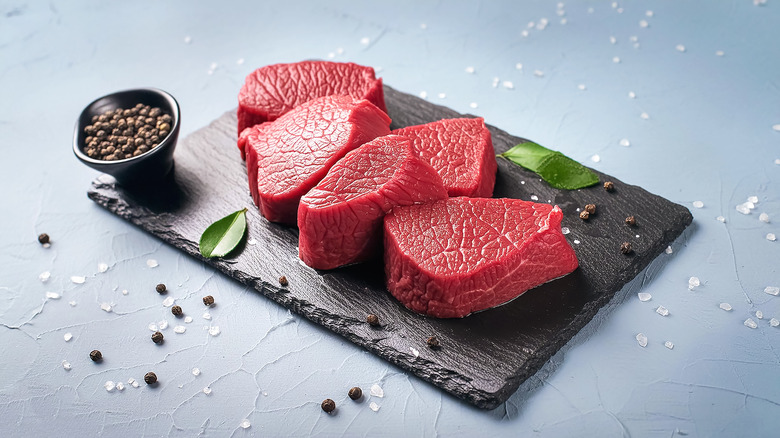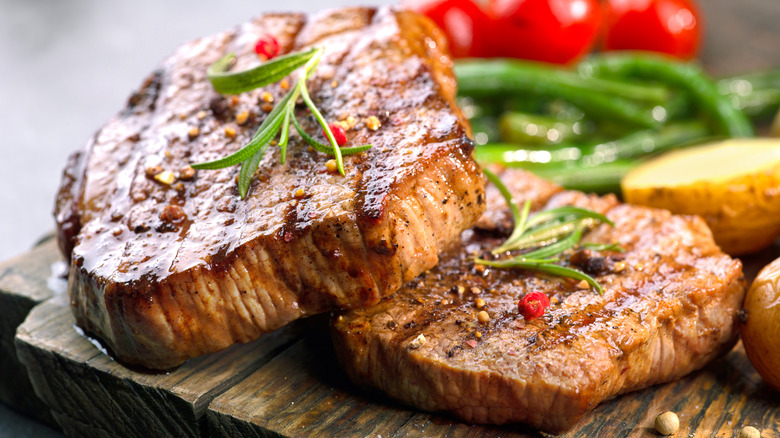The Type Of Steak You Should Avoid Cooking To Medium-Rare
While the debate will forever rage on as to the perfect way to cook steak, it has to be acknowledged that some factors are subjective and others objective. Take leanness, for example. This refers to the lack of fat on a given cut of steak, and it brings with it a list of pros and cons. Ultimately, lean steak is best cooked on the rarer side, even before hitting medium-rare.
Lean steak is high in protein and still contains a lot of flavor. Cuts like top sirloin or flank steak are popular lean cuts, but there are also lesser-known and underappreciated steaks like the Bavette steak or beef knuckle.
The one thing that fattier cuts have going for them is that all that marbling translates to moisture, meaning that these steaks can last longer on the pan or grill without drying out. Leaner cuts don't contain as much natural moisture, so the longer they are applied to direct heat, the higher the risk of them becoming dry and rubbery. If you want to pan fry, sear, or grill these cuts, it's best to keep it to a minimum time.
Alternatively, slow cooking these cuts keeps everything moist and also ensures the meat will stay tender, without being too pink for your palate. To achieve more of a 'steaky' taste, you can pan sear the meat briefly on each side to get the Maillard reaction.
More tips for cooking lean steak
If you don't enjoy steak unless it's at least medium-rare, but don't want to limit yourself to fattier cuts, don't despair. You can still enjoy a juicy yet lean steak. One way to do this is to marinate your beef. The time needed to marinate will depend on the cut of meat you choose and the type of sauce. Just be sure that you don't add too much salt, as this might dry your meat out. Once set, you'll have more wiggle room to grill or fry your lean steak and you can achieve your ideal doneness.
Another option is to tenderize your lean steak to make the most of its natural juices. Using a mallet or meat tenderizer will even out the thickness of your steak (which will help achieve more uniform cooking and avoid certain parts drying out) and spread out the moisture within the meat. Combine this method with some smoky seasonings and you're on your way to a restaurant-worthy steak from the comfort of your own kitchen.


